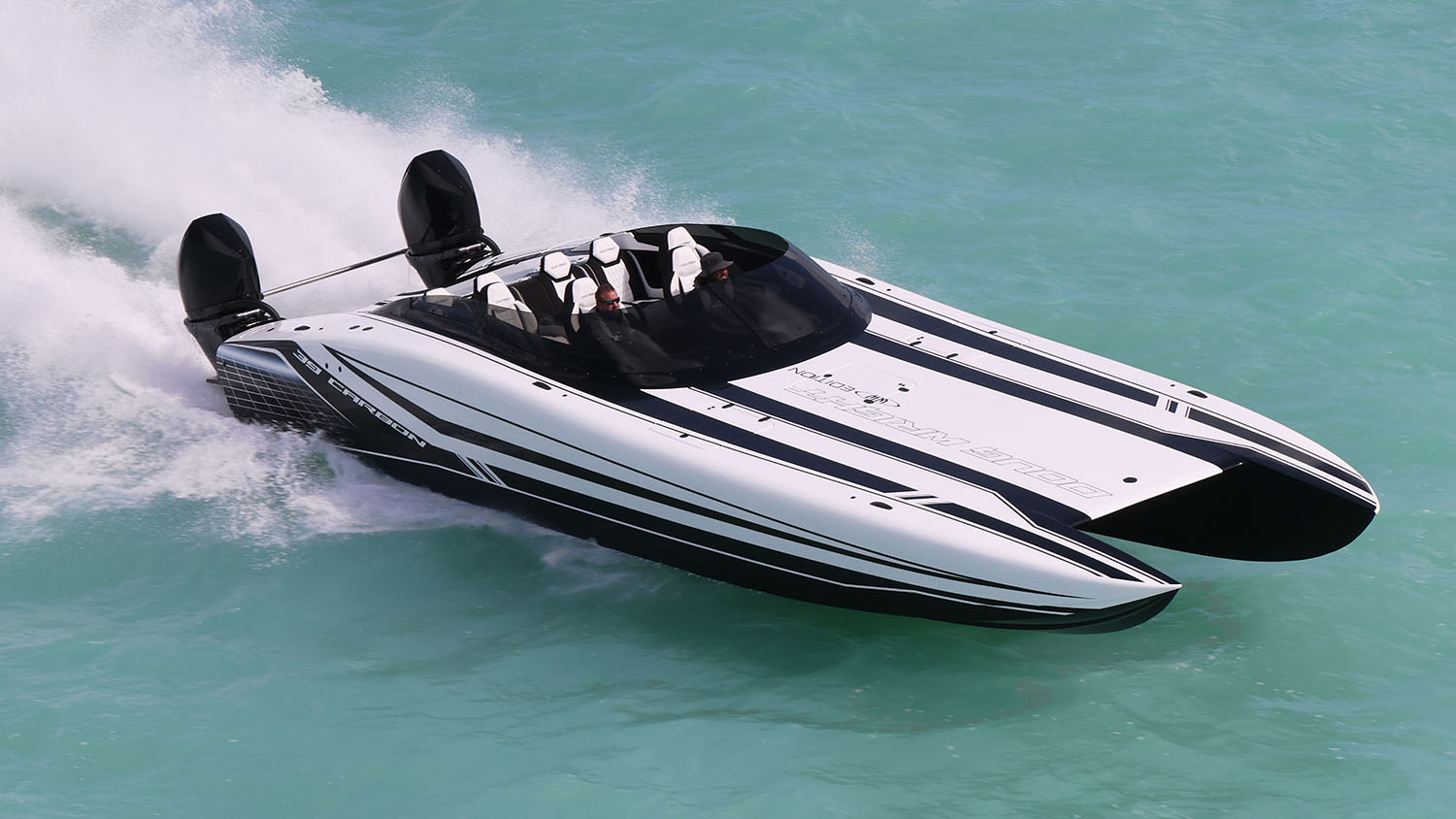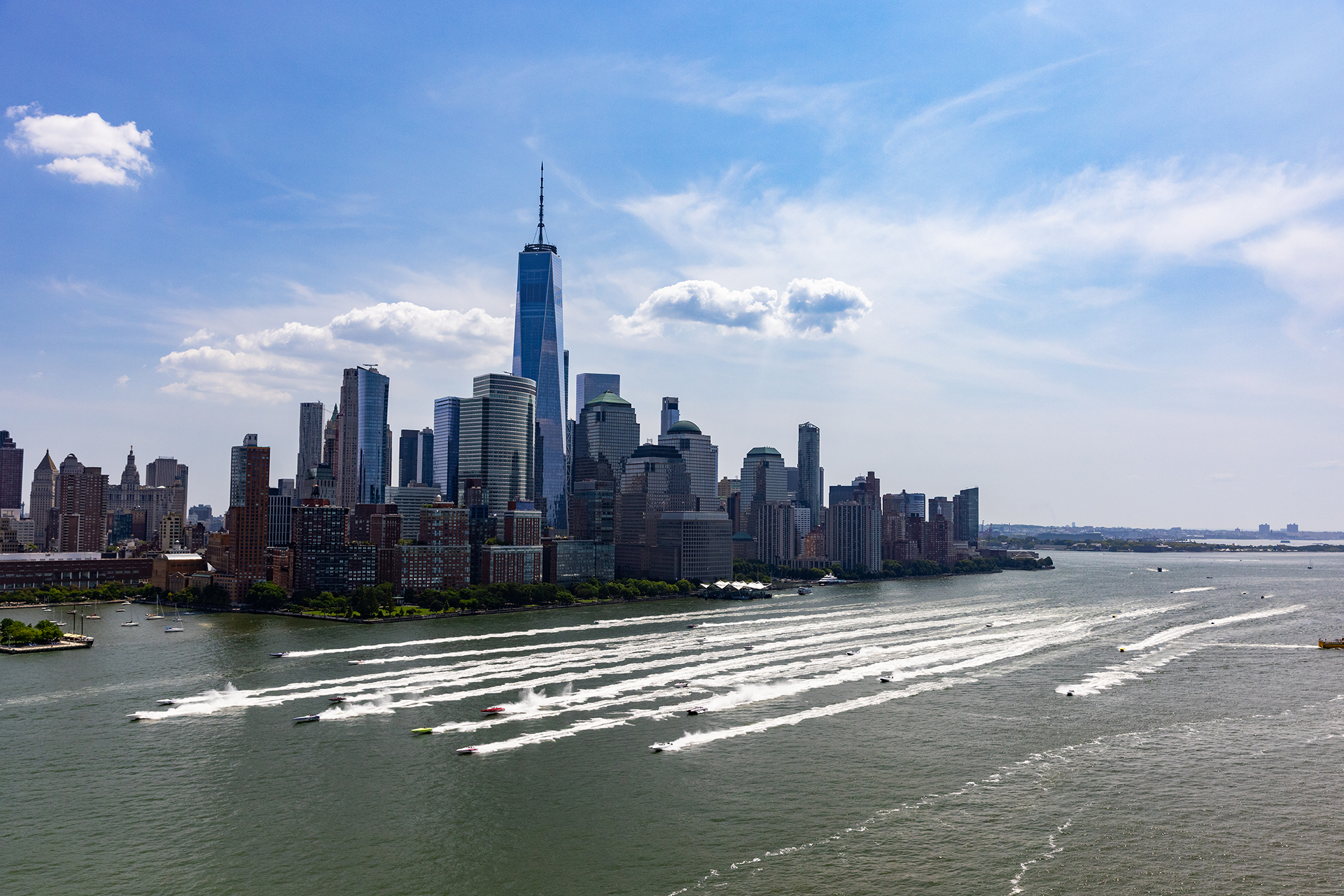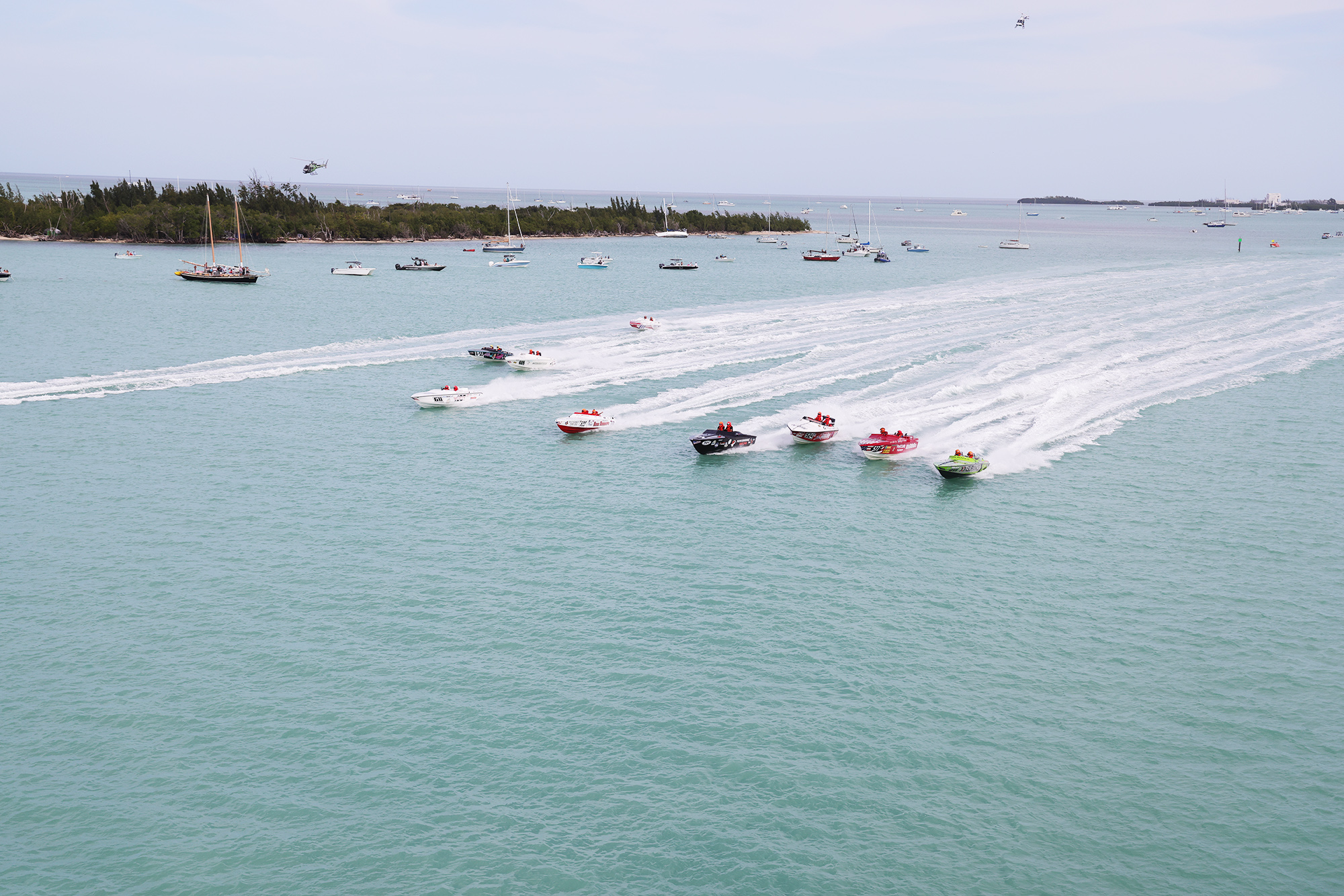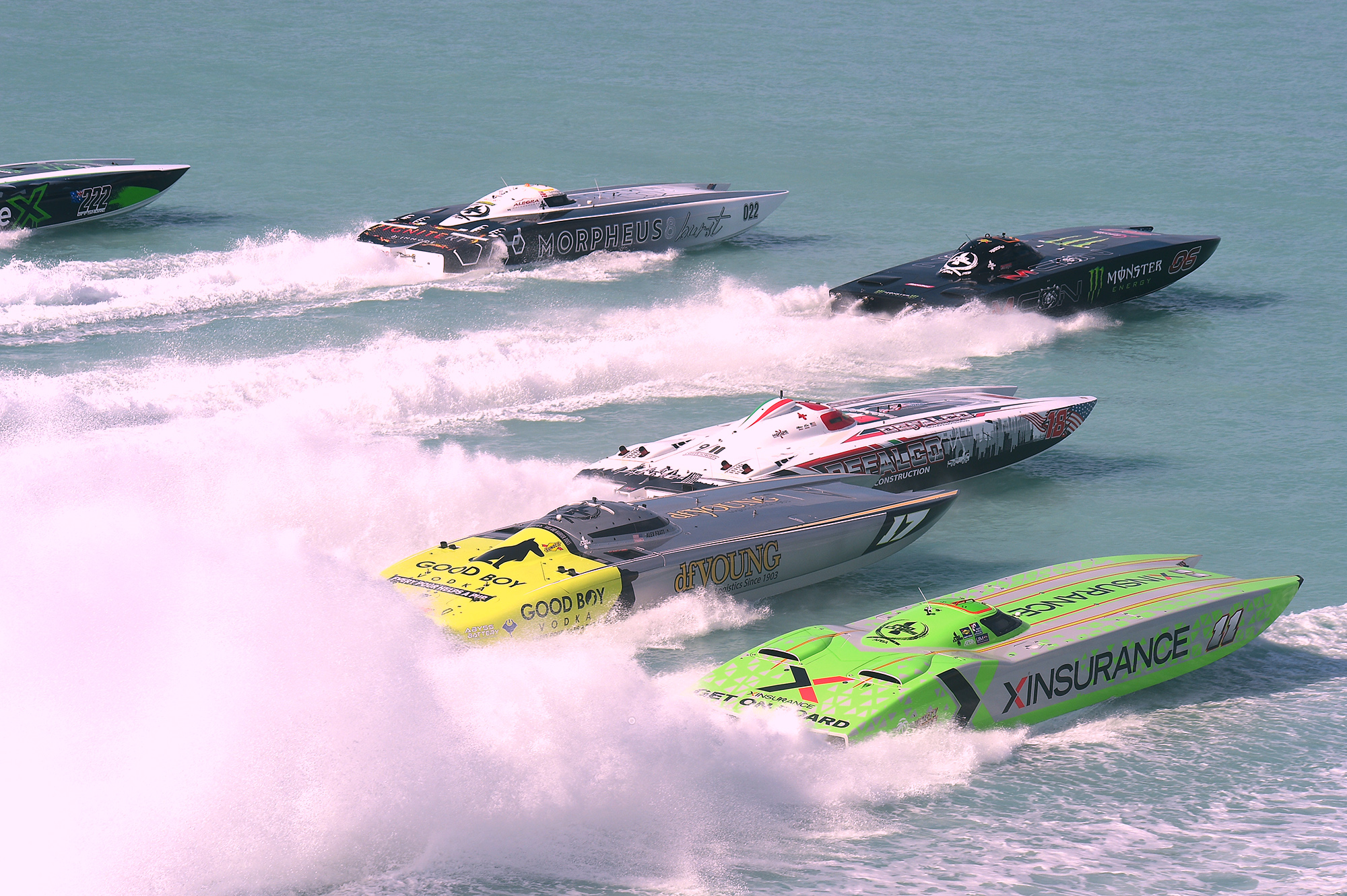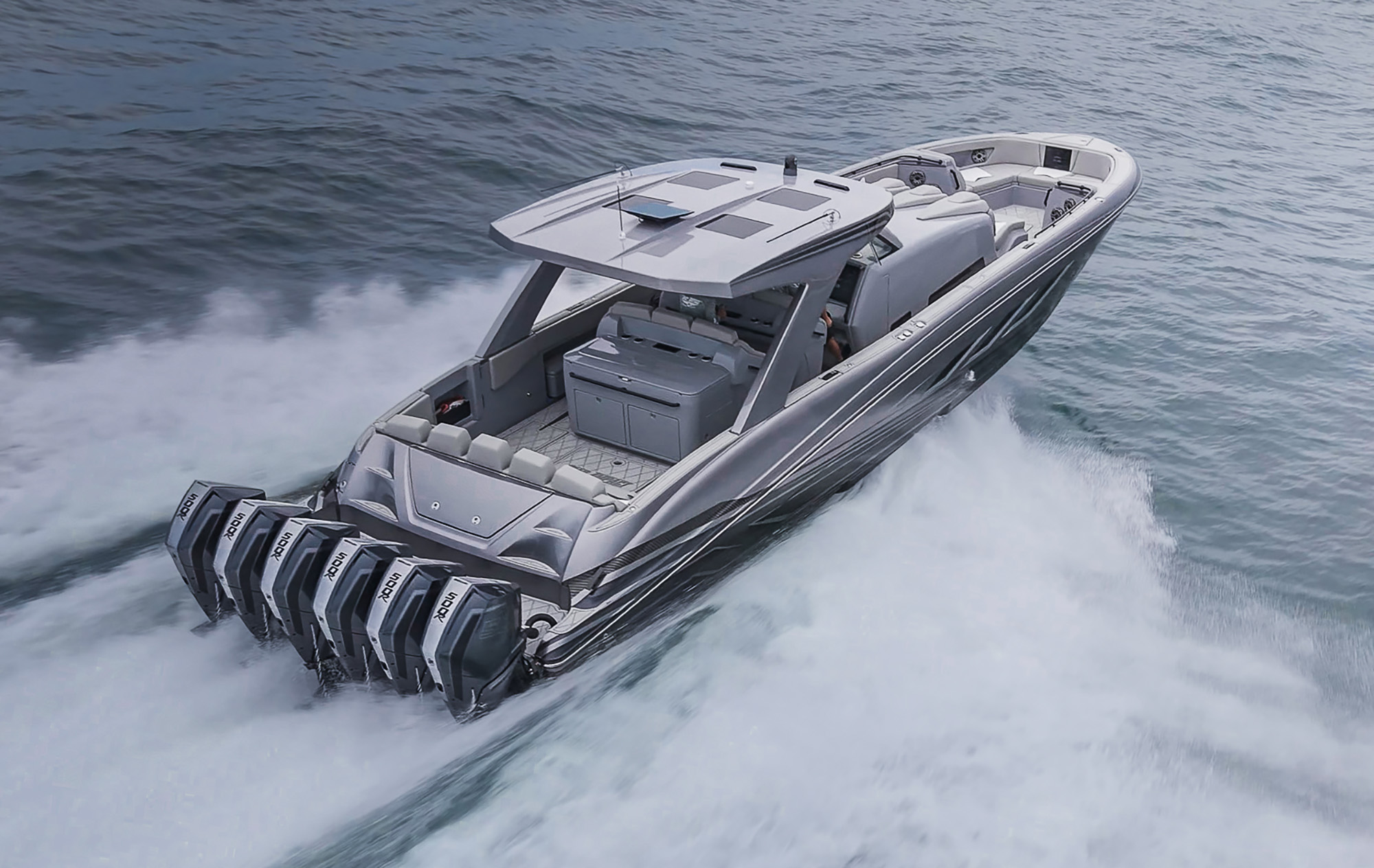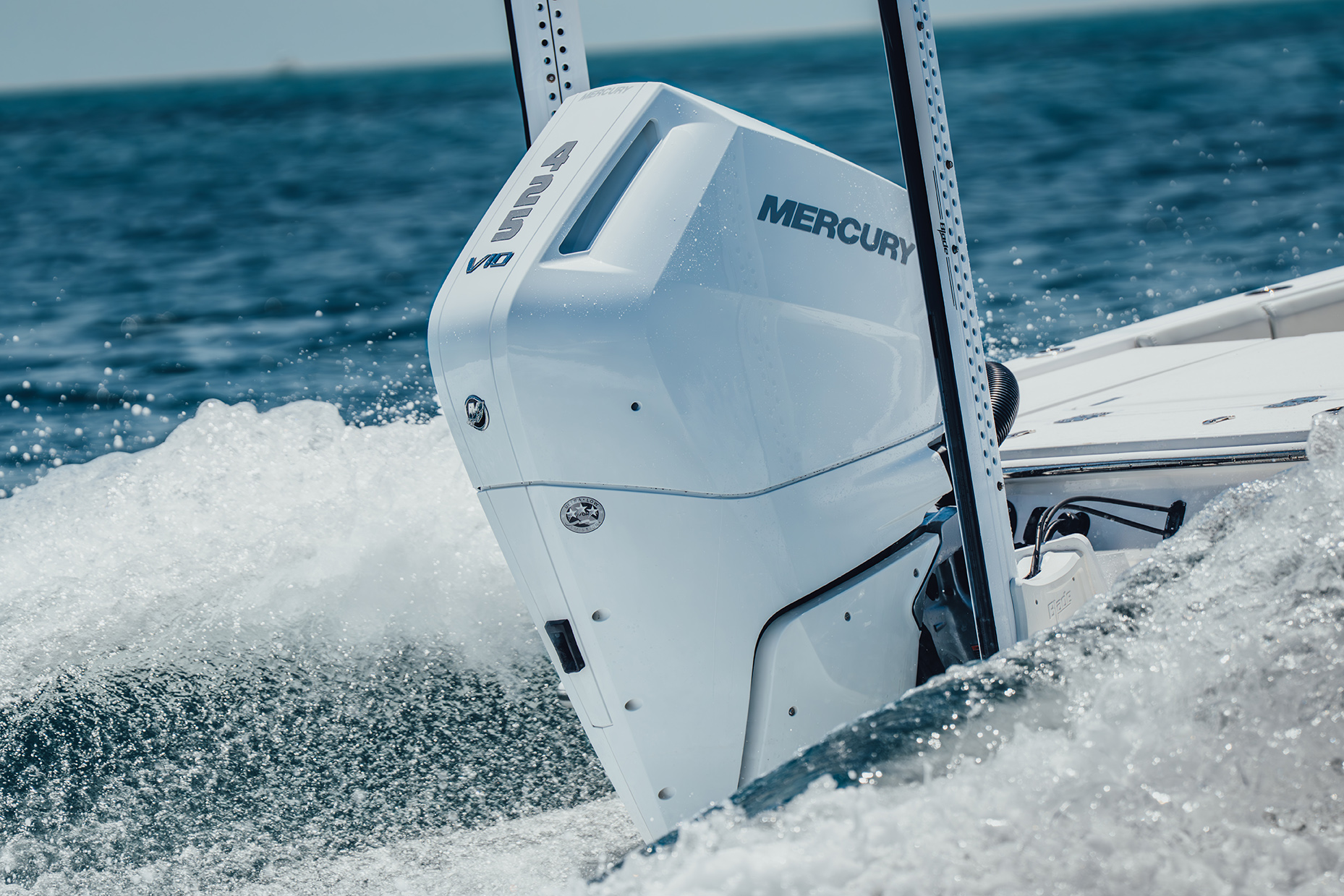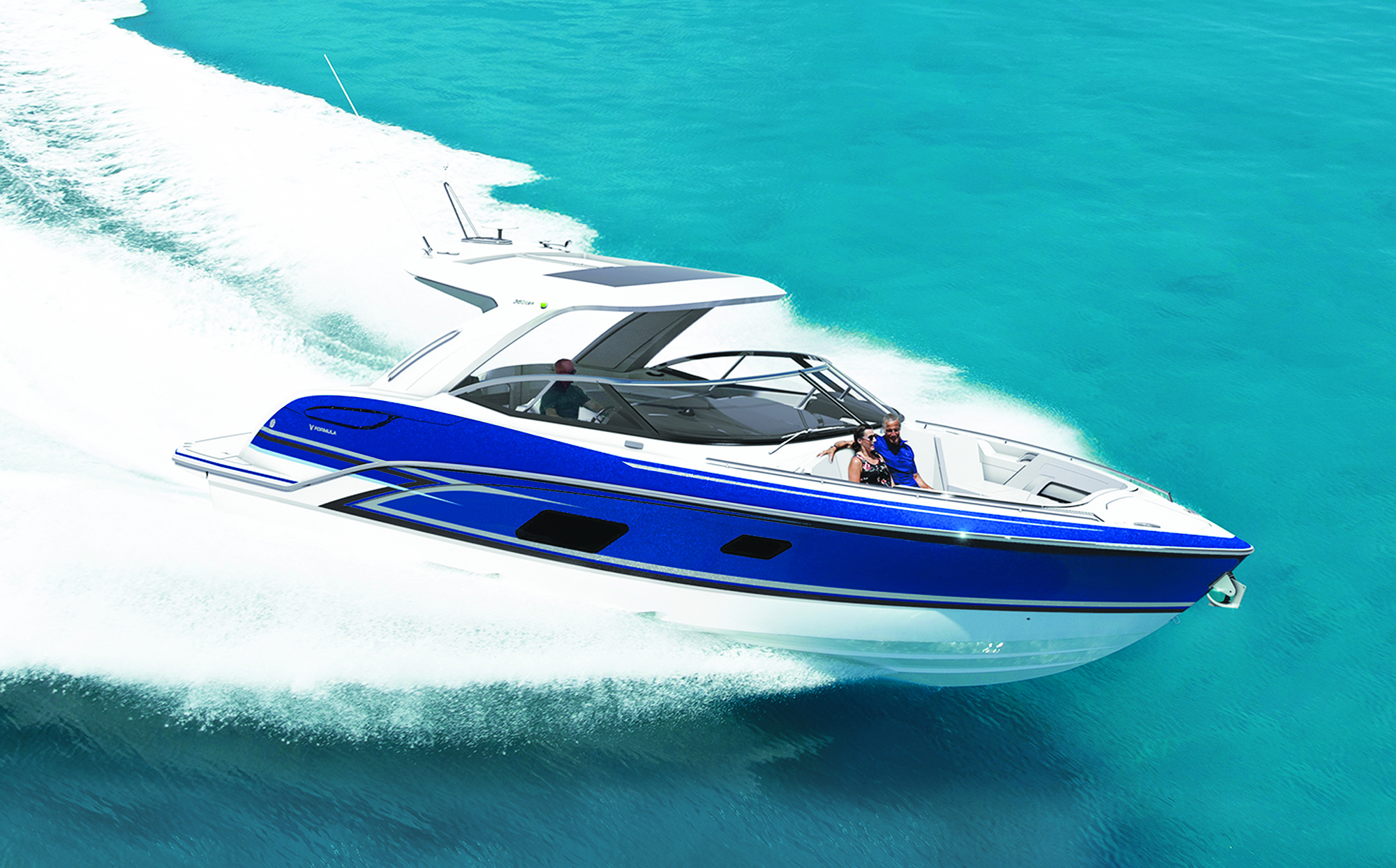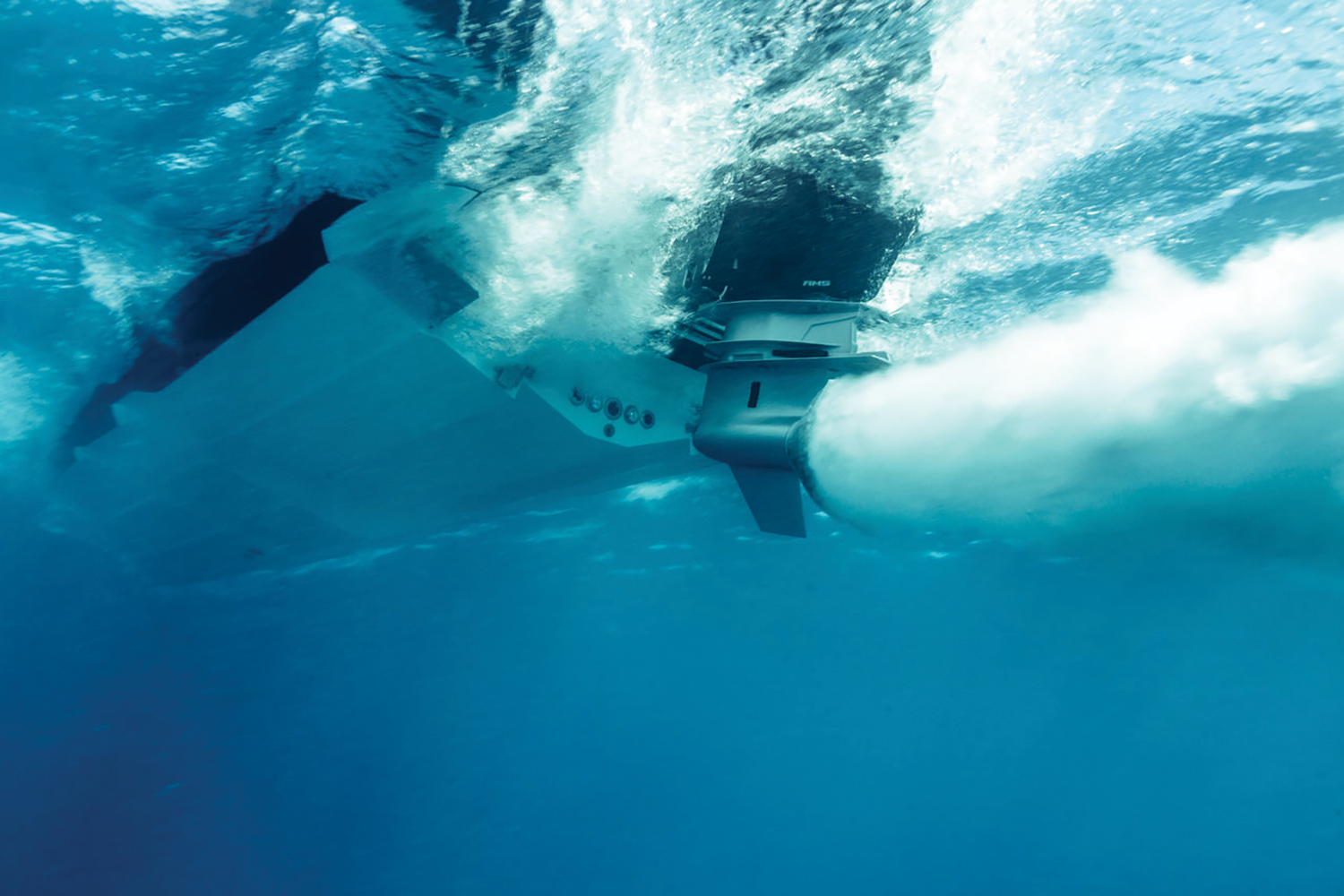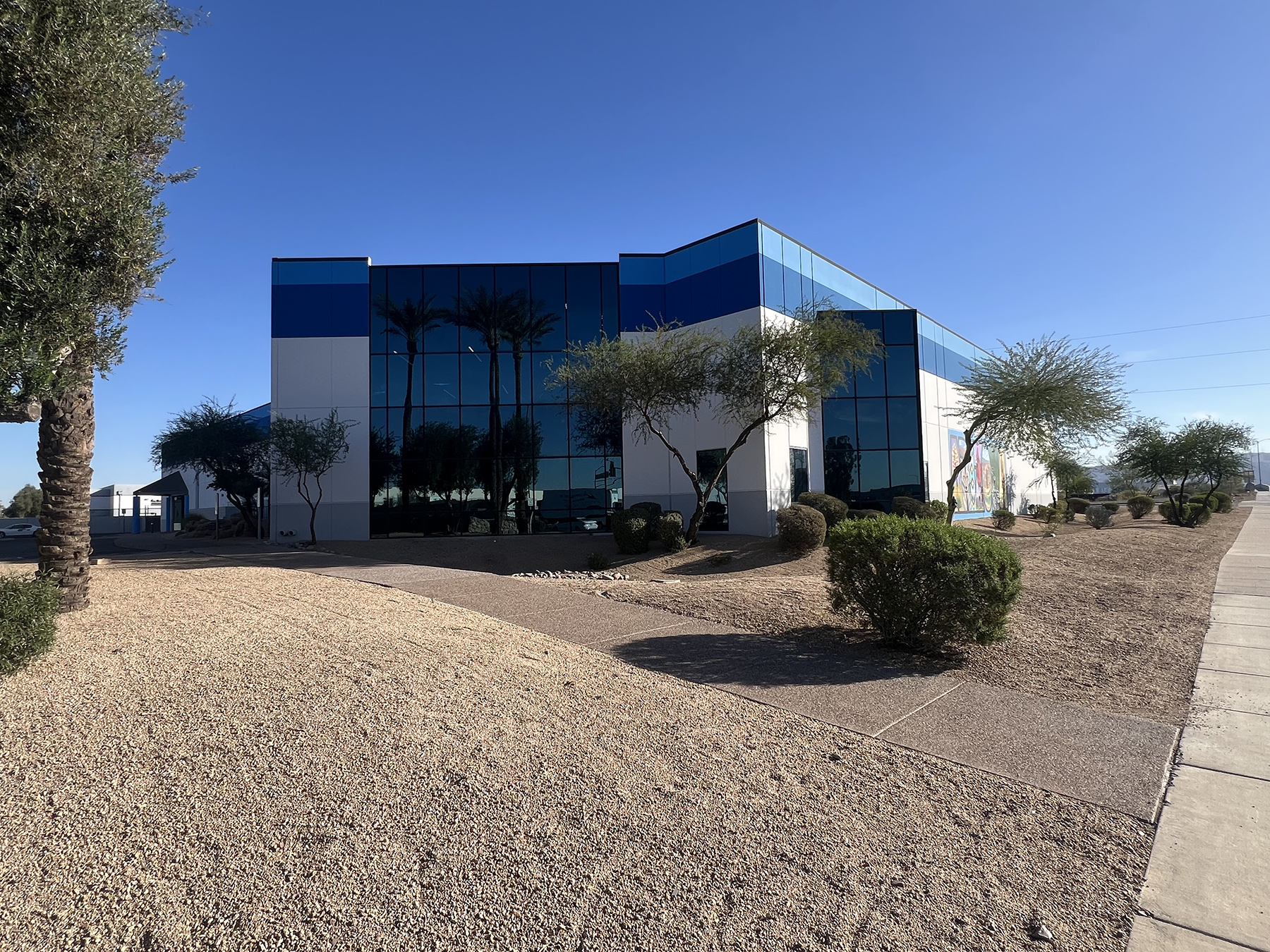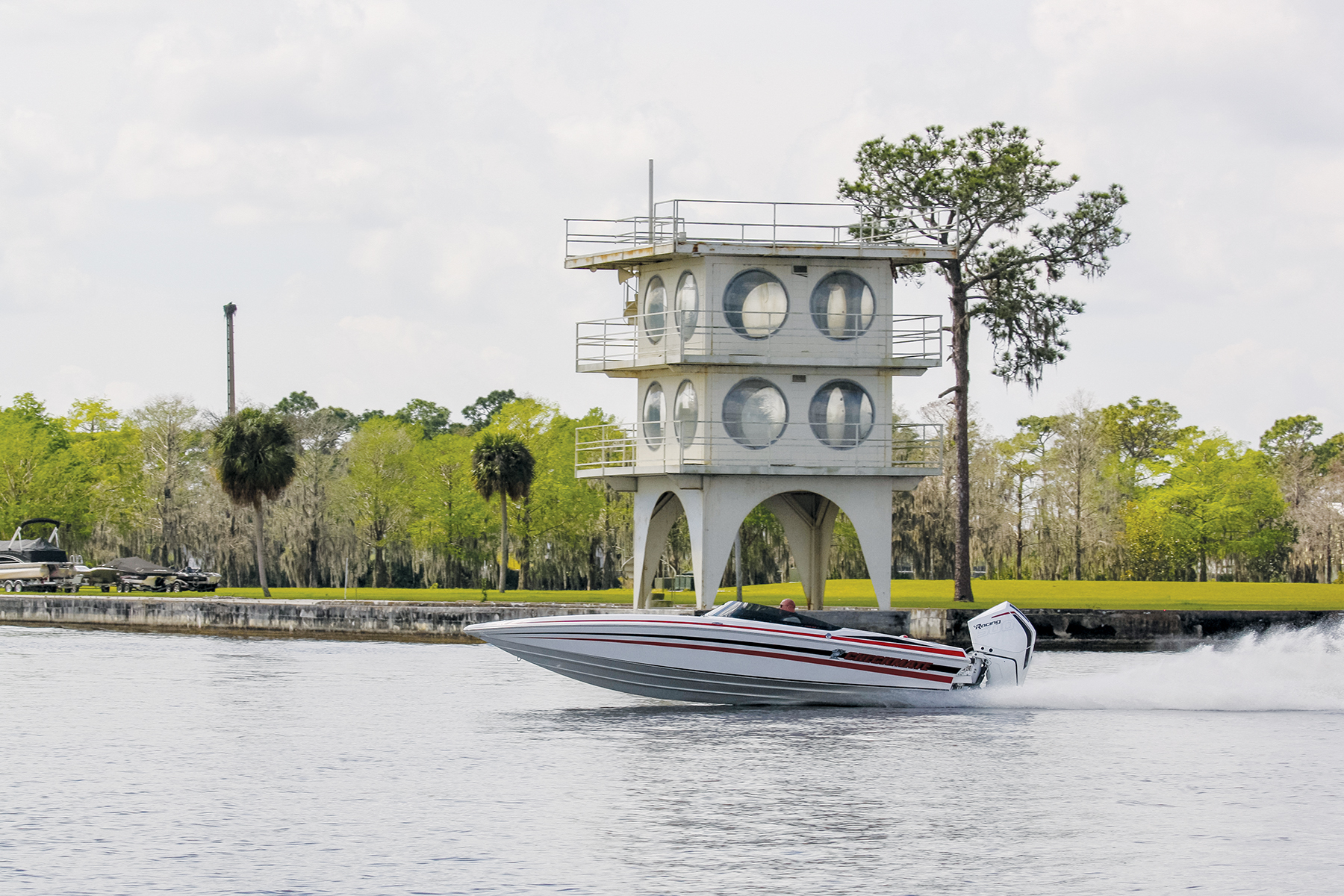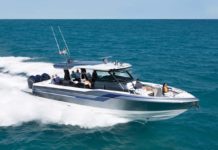After 10 years of almost and not quites, Randy Scism achieved his decade-old goal, winning the 1999 UIM Class 1 Offshore World Championship and, on the heels of that success, he’s launching a new boat company.
By Eric Colby
Ten years ago, Randy Scism was in the right place at the right time when he took a job in the middle of the desert to build an offshore racing team. This past October, his timing was pretty darn good, too. He and driver Ali Nasser complete the ultimate sweep in offshore powerboat racing, winning the Union Internationale Motonautique Class 1 Offshore European, World and Pole Position Championships.
At the same time. Scism launched his new company, Marine Technology Inc., in the United States, building high-performance catamarans.
You could easily imagine that Scism might gloat a little after his success and that he would use that momentum to promote his new company. Instead, the first words out of his mouth were spoken in gratitude.
“I can’t thank the Victory Team and the people behind it enough for giving us the opportunity to (win the championship),” said the 43-year-old from St. Louis. “It’s the greatest moment of my career.”
Scism spent the last 10 years building the Victory Team, which is based in Dubai in the United Arab Emirates in the Middle East, into the ultimate, well-oiled machine in offshore racing. During that time, the team has won the UIM Class 1 World Championship three times and finished in the top five every year. It has also captured a handful of European and Pole Position titles. So it was only appropriate that Scism and his Victory Teammates finished one-two-three in the race that he needed to clinch the world championship.
Unlike the American Power Boat Association or Super Boat International, which award national championships to teams that win the season-points competition and then crown separate world champions at another event, the UIM names the winner of the Class I season-points battle the world champion.
Coming into the first of the two Class 1 world championship races in Dubai, on October 29, Scism and driver Ali Nasser had already clinched the European championship. Early in the race, one of their boat’s transmissions was stuck in third gear. Finally, making one last attempt, Scism got the tranny into fourth gear and he and Nasser fought their way into third behind throttleman Felix Serralles and the driver Saeed Al Tayer in Victory 44 and Khalfan Harib and Mohamed Al Ghaith in Victory 4. It was the first time in the history of class 1 that three boats from the same team had taken the top three spots on an event.
Not only did the Victory Team claim the top three spots in the race one of the championships, the three boats finished one-two-three in the season championship standings. Serralles and Al Tayer took second with Harib and Al Gaith in third.
“We’re really excited about winning the first place.” Said Scism. “But we’re equally excited about Victory Team finishing one-two-three.”
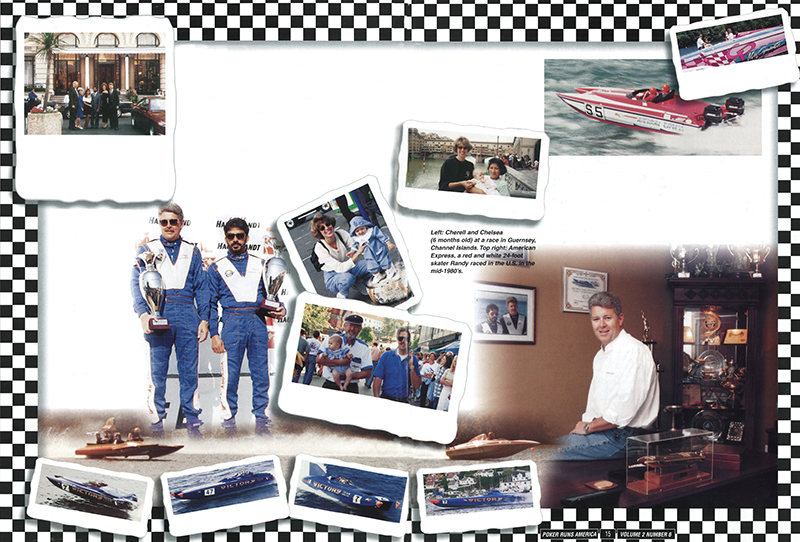
Sometimes when you’re on a roll, things go your way, and Scism and Nasser also captured the 1999 Pole Position World Championship. Again different from APBA, on Class 1, teams compete the day before the race in a top-speed kilo-run contest called Pole Position Qualifying. The points tallied for the events throughout the season to determine the Pole Position World Champion. Before the world Championships, Scism’s Victory 7 led Serralles’ Victory 44 by two points, and before the first day of competition, Victory 7 placed third in the Pole Position. That meant Scism and Nasser needed the second fastest run in qualifying for the final day’s racing to win the Pole Position as well.
UIM cancelled the second day of qualifying due to rough conditions and declared that the fastest lap in the second race would determine the Pole Position winner. With the second fastest lap in the race. Scism and Nasser won the Pole Position championship.
After living in Dubai since 1989, Scism and his wife Cherell returned to St. Louis with his daughters Chelsea, 5, and Taylor, 3, who would be starting school soon. Scism who was the Victory Team manager for 10 years, resigned the position, but will retain his throttle-man’s place. Unlike John Elway and Michael Jordan, he isn’t quitting while he’s on top, saying, “I want to stay in racing a little longer.” The Class 1 conquest couldn’t have come at better time for Scism’s new business. He is the president of Marine Technology, a U.S.-based performance boat company that is building a 42-foot catamaran in the race and pleasure configurations.
Unique for a catamaran, the boat has six-stand up bolsters, a full cabin and dedicated stowage for fenders, a cooler and more. It’s powered by twin stern drives from Mercury Racing HP500EFIs to HP900SC Poker Run engines.
“It’s a combination of the experience we’ve gained over the years from everything we’ve built.” Said Scism. We’ve kind of picked the best of what we believe is going to be the optimum performance.”
Performance has been a part of Scism’s life since he started souping up Ford Mustangs during his high school years. Among his favorite cars were a 1967 Mustang and a 69 Mach 1. With his parents, Katie and George Scism, who retired from aircraft manufacturer McDonnell-Douglas as a vice president, Randy spent hi leisure time boating on Lake of the Ozarks.
After school. Scism entered the working world and soon owned two Mobile service stations. He bought his first boat, a Glastron SS 176 powered by a Mercury 115-hp outboard. Within 60 days, he needed more speed and stepped up to a 175-hp Mercury Black Max outboard. The little runabout hit 65 mph.
Even though he and his first wife (with whom Scism has three adult aged children: Angie, Tammy and Greg), had a ball in the Glastron, Scism wanted more. He bought the ultimate outboard hot rod, a Hydrostream 20-foot Vulture equipped with a 225-hp Mercury. “Within a summer, I ordered a Land & Sea nitrous kit,” he recalled. The accessory boosted speed from 80 to 90 miles per hour. “We’d run down the river and nobody knew we had the nitrous. Everyone that pulled along side we had a ball with.”
Scism went to work for the local Hydrostream dealer and over the next year owned about a dozen Hydrostreams. He would work on the boats, get the speed out of them and sell them to someone he outran on the Mississippi River.
His first taste of competition came when Scism started drag racing lightweight Hydrostreams in the early 1980’s. Soon a customer asked him if he heard about a new boat called the Skater 24 that was rumored to be running 102mph on a pair of Mercury 2.4 EFI outboards.
Skeptical that the boat could really run those speeds, Scism and his customer tested a Skater 24 on New Hampshire’s Lake Winnipesaukee. “The boat ran 102 mph and turned on a dime,” said Scism. “I was hooked.”
He sold his dune buggies, four-wheelers, Hydrostreams and other toys and bought a Skater 24. With fellow St. Louis-area speed jockey and future Victory Team -mate Ed Colyer, Scism entered his offshore race on Huron Bay in Michigan in the early to mid-1980’s. He next spent time on the Great Lakes Offshore Powerboat Racing Association Circuit. In 1986, he ran at Key West, FL, at the worlds and, with Colyer, set the pro Stock world record near New Orleans.
In late 1988 Scism sold his Skater 24 to the Victory Team and traveled to Dubai to help with the set-up on he boat. It was during his early time with the team Scism quickly developed an appreciation for their hospitality. After a successful first outing with the team, they asked him to stick around for the second one. A teammate picked up Scism at his hotel in a Range Rover towing a raceboat. “We drive to the airport and pull out onto the runway and here’s the Hercules (military cargo jet) with the tailgate open. We drive in with the Range Rover and boat. It was wonderful.”
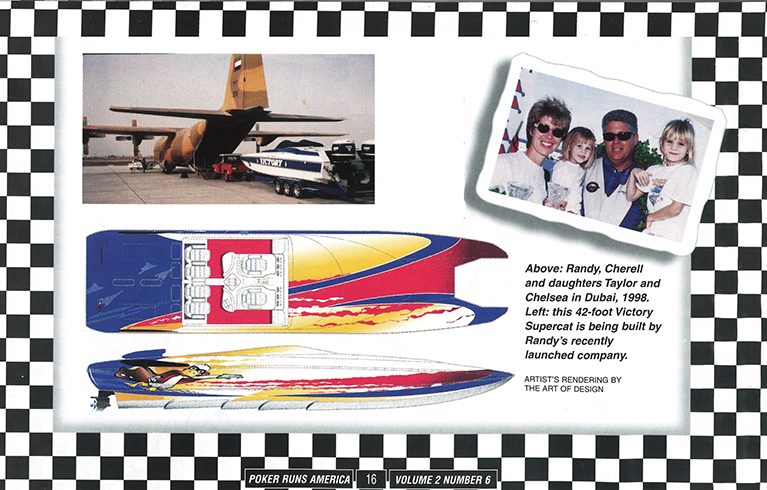
Not nearly as wonderful as the offer the powers that be Dubai made to Scism when they asked him to stay on full time as team manager. Cherell (then his fiancée) came to visit Dubai and enjoyed the area. With her blessing, Scism decided to take Victory Team up on their offer.
“They told her; we know the best way to keep Randy here is to keep you happy.” I’d spent all these years racing and trying to figure out how to find it and now it was like a dream come true. Someone else was paying me to race.”
They weren’t just paying Scism. The Victory Team effect employs 65 full-time workers in a six-acre facility that houses a race shop big enough for three Class 1 tractor rigs, plus a workshop truck, and individual shops for rigging, engine building, dynamometers, fiberglassing and carpentry.
“The thing that most teams (in the United States) don’t have is testing,” said Scism. “When we’re engine testing, we put a full race course up, put a rescue diver in the air and run a full 150 -mile race nonstop.” With the exception of a few elite teams, most American teams test the day before a race at the side.
Then again, there is more at stake in Class 1 racing. When he raced i the UAE, Scism and the Victory crew regularly won a Mercedes or a Range Rover for the team, not to mention a portion of a purse of hundreds of thousands of dollars. In Class 1, the purse at every race is $100,000.
Like most racers, the Victory Team started with used boats, eventually placing an order for a new Skater 32 ProStock boat. Frustrated by having to wait months for their new boat, Scism’s bosses asked him if he could build boats for the team.
The first boat was a 29-foot catamaran. Victory Team built three and moved up to a 32-footer that resembled a Skater 32. Victory was building the boats with the blessing of Douglas Marine (builder of Skater) president Peter Hledin and Scism even consulted Hledin on details. After competing in several outboard classes, the Victory Team stepped up to a Modified boat with inboards. They met Mike D’Anniballe, president of Sterling Performance, through Felix Serralles Sr., who had been using the engine in his Modified Class Don Q Skater. In the early to mid-1990s, the Victory Team ran a successful campaign with Sterling power.
Stepping up, the team next built a 35-foot cat and soon followed with the first Victory Team Class 1 boat, a 43-foot cat. Before they entered the Class 1 battles, the Dubaians shipped the 43-footer and their Stock, Pro Stock and Modified boats to the United States for the Suncoast Offshore Grand Prix in Sarasota, FL, in 1992. The boats spent a month before the race at Mercury’s Lake X test facility.
Shocking the stateside racers, Scism and driver Hameed Buhaleeba bested the top American teams, including the to-that-point-undefeated Jim Dyke and Kjell Rokke in their Skater 40, Spirit of Norway.
“When we came over and won in Sarasota, Kjell said he wanted another chance, so two weeks later at Key West, we beat them again,” said Scism
After its success in the U.S., the Victory Team was launched at full scale. The next year, the team competed in its first Class 1 season, finished first. Since then, Victory Team finishing first again in 1995 and 1996.
For all its glory, the team also experienced a difficult loss. In 1995, Buhaleeba and his brother Rashid were racing in the Class 2 world championships in Cowes, England. The brothers were leading handily, mastering the two- to three-foot seas, when their boat suddenly hit six-foot tall tanker rollers, tripped, stuffed and rolled.
Hameed Buhaleeba was killed in the accident. “It was a huge loss for me personally as well as for the people of Dubai and for the sport,” said Scism.
Grieving the loss of his friend, Scism made a commitment to improving the safety of offshore race boats. Borrowing from Unlimited hydroplanes, in 1996, the Victory Team pioneered the escape hatch in the tunnel of an offshore race boat.
Scism and Nasser were glad the hatch was there when they were racing in Rome and flipped in a turn. They had an agreement that, if they did roll, Scism would unstrap first and go out the escape hatch. He reached up, popped the latch and crawled out. Then Scism helped out his partner.
Even in an accident, Scism’s timing was perfect. Looking back on his career, He’s humbly grateful for the opportunity his friends from a faraway land gave him.
“I think we took something from scratch to one of the best powerboat teams in the world,” said Scism. “We were very fortunate to be able to take that opportunity. I just hope we did a good job.”
Catching up with Randy Scism
Since his days of offshore racing for the Victory Team, Randy Scism has spent the last 20 years building Marine Technology Inc. into an elite performance-boat company. While the company is still true to its roots building offshore catamarans with huge horsepower, the MTI has broadened its offerings to include three center-console models and outboard offerings of its pleasure boats.
Offshore racing has become a family affair with Scism’s daughter Taylor following in her father’s footsteps. Taylor has been racing been getting a world-class offshore education racing education between her father and throttleman John Tomlinson, who is racing an MTI with Taylor.
For the Miami International Boat Show, Poker Runs America will catch up with Randy Scism and the family to talk about Marine Technology Inc. and the performance-boating industry.



